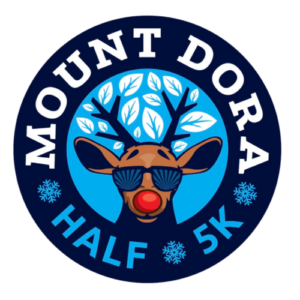If you’re preparing for the Mountain Dora race this year, don’t forget about the heat! While it is in December, it’s still in Florida, so heat will likely be a factor to overcome for many of you, especially if you’re traveling in from a cooler climate.
While heat is enjoyable for leisure, it’s a different beast when it comes to competition, and it can become quite a dangerous roadblock if you aren’t prepared. If you haven’t heard of heat exhaustion before, it’s most definitely a real thing.
So with that being said, here are some important takeaways you should become familiar with in order to come fully equipped to handle any weather condition race day throws at you. We’ll also touch on some common heat-induced ailments that you’ll want to be aware of so that you can do everything in your power to avoid them.
Let’s get into it.
Stay hydrated, early and often
While this may seem like an obvious tip, unfortunately too many forget this simple but crucial step time and time again. Additionally, while staying hydrated during activity sounds simple enough, there’s actually more to it than taking a few sips of water here and there.
When we exert energy, our body loses key amino acids and salts that keep our body hydrated. This is why water won’t be sufficient enough once you begin to cover distances like a half-marathon and onward.
Instead, consider consuming high-quality electrolytes. These products are packed with sodium and other key electrolyte properties that will replenish your body and help you recover along the route.
Lastly, this may be something you haven’t heard of, but it’s important to know. While water and electrolytes are 100% necessary, excessive water intake can be detrimental. While this only occurs under extreme circumstances, this ailment is known as Hyponatremia. This occurs when your water intake is excessive to the point of diluting blood-sodium levels.
With all of that being said, you shouldn’t have to worry about these extremes. Simply be sure to fuel your body days and weeks leading up to the race, the morning of, and make it a point to take advantage of all hydration stations throughout the course of the race.
Dress appropriately
Once again, this tip may seem obvious to most. But again, common sense is a lot less common than you may think…
Dressing appropriately doesn’t begin during the morning of the race. It begins at least a week or so leading up to race day itself. Why? Because the weather can change on a dime. This is why it’s important to track what the weather forecast states for the day of the race.
Depending on what it says, you must make sure that you are properly prepared, that all gear and accessories have been purchased or found prior to the night before the race, and that you have everything that you’re going to need for a smooth and emergency=free race day.
This includes but isn’t limited to:
- hat or hand band
- Singlet or t-shirt depending on the weather
- Spandex of breathable shorts
- Sweat resistance socks (and maybe even an extra pair just in case!)
- spandex, NOT underwear (chafing…)
- Hydration accessories
- Sunglasses
- Chafing products for nipples, underarms, groin region, and any other vulnerable area
Prepare to be humble
So you’ve been training for months leading up to the big day, preparing yourself for a personal best. You wake up on the morning of the race, and the forecast is a borderline heat wave. What do you do?
If you weren’t aware, you’d likely continue as if nothing happened, prepared to give it your all, run at your training race pace, and hope to achieve your goal. If this is you, you may be unpleasantly surprised by the outcome.
If you’re reading this article, however, you’re going to be made aware so that you can reset your expectations for the potential of a dangerously hot race day. With that said, here is what you’ll need to keep in mind.
When running in such heat, bodily functions don’t react normally. You may find it more difficult to breathe, your heart rate will increase more than usual, you’ll sweat more which will result in needing to rehydrate more often, you could overheat, the list goes on.
In order to combat this and ensure that you finish the race safely, you’re going to need to approach the race with caution. This may mean slowing down when you feel like you’re getting too hot. This may mean not pushing the boundaries of your potential on this particular day. This may mean stopping when you had planned not to stop.
This doesn’t mean don’t do your best. It simply means be smart, be prepared, and be ready to make adjustments.
Chase the shade
If all else fails, chase the shade! While this is somewhat of a joke, it’d be smart to keep your eyes peeled for any bit of shade that you can come by throughout the race route. You’ll thank mother nature for any bit of relief.
Oh, and don’t forget your sunscreen! Good luck!
